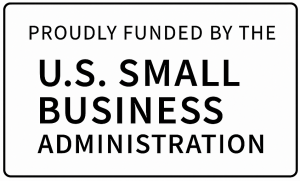A construction site is a lot more than just cement. Every day, crews handle all sorts of materials, and many of them come with chemical hazards that can be harmful for your health.
What is a Chemical Hazard?
A chemical hazard is any substance that has the potential to cause harm due to its inherent chemical properties.
This includes not only materials that can make you sick but also those that can create physical dangers, like starting a fire or causing an explosion.
The actual risk depends on how much you’re exposed to and how you come into contact with the substance, whether through breathing it in, skin contact, or ingestion.
On a job site, these hazards often show up as dust, fumes, and mists from common materials, such as:
- Paints, glues, and other solvents
- Fumes from welding
- Epoxy resins and spray foams
- Dust from cutting concrete or brick (silica)
- Compounds for waterproofing and curing
Top Chemical Hazards in Construction Sites
The effects of chemical hazards often depend on the composition and concentration of the associated chemical. Information of which can be found in their corresponding Safety Data Sheets (SDS).
The next section will cover the major hazards on the job, where you’ll find them, the main health issues and the warning signs to watch out for.
1. Solvents and Coatings in Paints and Finishes
These chemicals are everywhere in painting and finishing jobs, but their invisible vapors can be a serious problem.
Common Sources:
You’ll find them in products like paint thinners, cleaners, oil-based paints, primers, mastics, and carpet glues.
The Health Risk:
Vapors from these products can easily irritate your eyes and lungs. Many solvents can also be absorbed through the skin, where they can cause long-term damage to your nervous system and internal organs.
Warning Signs:
Be cautious if you notice strong odors in poorly ventilated rooms, feel your eyes or throat becoming irritated, or find a tacky residue on your hands or skin after handling materials.
2. Welding Fumes and Metal Dust
The smoke from welding is more than just a nuisance; it’s a complex mixture of fine metal particles that can be highly toxic.
Common Sources:
This hazard is present during structural welding, metal fabrication, and any repair work, especially in corners, tanks, or other confined spaces where fumes can concentrate.
The Health Risk:
Welding fumes contains tiny metal oxides that can get deep into your lungs. Welding on stainless steel is especially hazardous because it releases hexavalent chromium and nickel, which are known carcinogens. Long-term exposure increases the risk of cancer and neurological damage.
Warning Signs:
Watch for the visible plume of smoke coming off the weld. Other signs include a metallic taste in your mouth, a persistent cough, or any welding work being done without proper ventilation.
3. Isocyanates in Foams, Adhesives, and Sealants
Isocyanates are a key ingredient in many polyurethane products, but they are powerful respiratory irritants.
Common Sources:
They are the active chemical in polyurethane adhesives and sealants and are released in high concentrations during the application of spray polyurethane foam (SPF) insulation.
The Health Risk:
Isocyanates are potent sensitizers, meaning that after exposure, your body can develop a severe, allergy-like reaction to even tiny amounts. They can trigger asthma-like attacks and cause permanent lung damage. Spraying operations can easily release isocyanates far above safe exposure limits.
Warning Signs:
Pay attention to any chest tightness, wheezing, or difficulty breathing. Irritation of the eyes and throat is another key sign. Always restrict access to areas during and immediately after spray foam application.
4. Epoxy Resin Systems and Skin Irritation
Epoxies are fantastic for bonding and repairs, but the uncured chemicals can be brutal on your skin.
Common Sources:
Used for concrete anchoring, patching compounds, structural bonding, and fiber-reinforced polymer (FRP) wraps.
The Health Risk:
The primary route of exposure is skin contact. Uncured epoxies can cause severe irritant or allergic dermatitis: painful, red, and itchy skin rashes. Some components can also cause respiratory irritation if inhaled.
Warning Signs:
Look for red, itchy, or swollen skin on your hands and forearms. Check for sticky resin on tools, clothing, or surfaces. Always wear the correct type of gloves and sleeves for the specific epoxy system you are using.
5. Concrete Additives and Curing Compounds
Modern concrete is more than just cement, sand, and water. The chemical admixtures used to enhance it have their own risks.
Common Sources:
These include accelerators (like calcium chloride and calcium nitrate), retarders, and liquid curing compounds or membranes sprayed onto fresh concrete.
The Health Risk:
Even products labeled “non-hazardous” require proper PPE. Some admixtures can cause skin irritation or chemical burns. Chlorides can corrode reinforcing steel, and runoff from curing compounds can be highly alkaline, harming the environment.
Warning Signs:
Watch for residue or overspray near storm drains, listen for complaints of nose or eye irritation, and ensure proper washout stations are being used.
6. Respirable Crystalline Silica Dust
This invisible dust is generated from cutting or grinding common masonry materials and is a leading cause of occupational lung disease.
Common Sources:
It’s released when cutting, grinding, drilling, or chipping concrete, brick, stone, or mortar.
The Health Risk:
The danger comes from the fine, respirable dust particles that are too small to see. When inhaled, they travel deep into the lungs and cause scar tissue to form. This leads to silicosis, an incurable lung disease, and also increases the risk of lung cancer and COPD.
Warning Signs:
The most obvious sign is a visible dust cloud. Other indications include dry sweeping of concrete dust instead of using a *HEPA vacuum, or seeing workers using grinders or saws without a water feed or proper dust shroud attached.
*HEPA: High-Efficiency Particulate Air; filters and vacuums that capture very fine dust like silica.
7. Tar, Bitumen, and Waterproofing Fumes
The materials used for roofing and waterproofing release hazardous fumes, especially when heated.
Common Sources:
Hot-mopping asphalt from kettles, torch-down roofing, and many liquid-applied waterproofing membranes and primers.
The Health Risk:
The fumes contain polycyclic aromatic hydrocarbons (PAHs), which can irritate the airways and skin and are linked to an increased risk of cancer. Heat and poor ventilation dramatically increase the concentration of these hazardous fumes.
Warning Signs:
A strong, pungent tar or asphalt odor is the clearest sign of a potential hazard. Be aware of any irritation reported by workers near kettles or complaints from people in adjacent buildings.
8. Hidden Hazards in Older Buildings: Asbestos and Lead
When renovating or demolishing older structures, you are likely to encounter hazardous materials that were once common in construction.
- Asbestos: Found in older insulation, floor tiles, roofing materials, and cement products. If disturbed, its fibers can be inhaled and remain in the lungs for life, causing asbestosis, mesothelioma, and lung cancer years or decades later.
- Lead: Commonly found in paint applied before 1978. Lead dust from sanding or demolition is highly toxic and can harm the nervous system, kidneys, and cardiovascular system. It is especially dangerous for children.
Why Chemical Hazard Awareness Matters on Construction Sites
Chemical hazards on construction sites affect worker health, project quality, and compliance every day. Many exposures are not immediately noticeable during the task, yet they can lead to asthma, skin disease, cancer, rework, and delays.
Thus, chemical safety is of as much importance to projects as schedule and budget. Before starting a task, knowing the risks prepares your team to choose the right safety controls for the job.
Establishing a clear chemical safety plan starts with understanding the products your team uses. Search by product name or manufacturer in the SDS database to find handling instructions and exposure limits instantly.
FAQs
1) Which chemical hazards create the biggest long-term health risks on construction sites?
Welding fumes, respirable crystalline silica, and asbestos carry strong cancer and lung-disease risks. Bitumen emissions, isocyanates, and uncured epoxies add respiratory and skin disease.
2) Why do some paint and solvent jobs cause problems even when the room looks clear?
Solvent vapors can build up in small areas and many solvents soak through the skin. Use the right gloves, ventilate, and close solvent containers during breaks.
3) What makes SPF insulation a high-attention task?
SPF releases isocyanate vapors and aerosols during application. Limit access to trained, fully protected workers during spray and for the posted cure time.
4) How can I spot silica hazards quickly?
Look for dry cutting or visible dust clouds during grinding or sawing, missing shrouds, and dry sweeping of debris. Switch to water suppression, shrouds, and HEPA cleanup.
5) Why do roofing and waterproofing projects trigger odor complaints?
Bituminous products and some primers release fumes and VOCs. Control temperature, improve airflow, and schedule work to reduce exposure to occupied areas.




